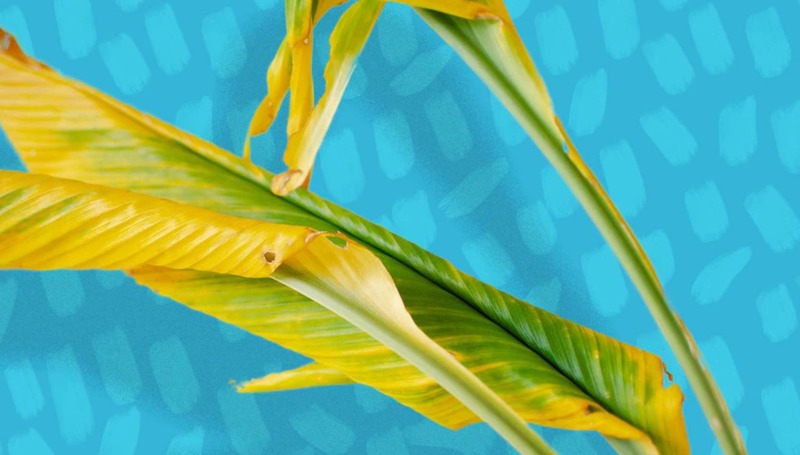They make it simple for us to tell when they’re feeling under the weather, and it’s crucial for us to be able to comprehend a plant’s language. When houseplants or landscape plants begin to yellow their leaves. Looking to try something new? Check out this.

When a plant’s leaves start to yellow, we may believe they’re in need of some love and care. Even when their outward appearances suggest otherwise, determining what a plants needs is sometimes difficult. The leaves of a plant might turn yellow for a variety of reasons. Among them are overwatering, underwatering, temperature changes induced stress, soil issues such as salinity or acidity, nutritional shortages, pests, disease, the age of the plant itself , pot-bound roots , and transplant shock. Overwatering or underwatering is generally the main reason behind all of these factors.
What are other causes of yellowing plant leaves?
Not Enough Water
When a plant’s roots aren’t getting enough water, its leaves will first turn yellow. This will happen if you only water the top portion of the soil. You can prevent this by filling a basin or sink with three inches of water and soaking the bottom of the container in it. This allows the plant to obtain water from the bottom. After 30 minutes, remove the container and allow it to rest so that any extra moisture may escape. Repeat this procedure every four weeks on a regular basis.
Too Much Water
If your plant’s leaves are yellow and dull, but not yet dying, you may be overwatering it. Plant roots dislike being moist; they will drown because they also require to dry out in order to breathe. Roots of wet soil might cause root rot, which can destroy plants if it progresses to the stem and leaves.
Irrigation can cause plants to suffer from root rot, which is unfortunately the most common hydroponics problem. Reduce the amount and frequency of your watering to prevent plant disease. Make sure the dirt you’re using has enough aeration and porosity so it drains properly. Use a container with drainage holes at the bottom to allow any surplus water to drain freely away. If there are damaged roots, use scissors to cut them away.
The Plant Is Adjusting To a New Environment
When you relocate, your plants, like you, go through an adjustment period. The introduction of a new environment can be challenging for your plant and one way it may show its discomfort is by yellowing leaves. The greatest method to comfort your plant in a new environment is to ensure that, while being in a totally different place, you are still able to provide it with all it requires. After some time has passed since the move, the plant will adjust to its new surrounds.
The Plant is Getting Too Much Light
If a plant’s leaves become yellow as a result of being exposed to too much light, it is probably due to its placement in the house. Move the plant to another area of the home that provides just enough light.
Lack Of Light Or Air Circulation
Another thing to consider is whether or not your space has a terrible light situation or the plant you’ve picked isn’t suitable for the low-light environment. This might be the case if your plant appears despondent as a result of bad air circulation.
The plant will suffocate if it is pushed against a wall, trapped in a corner, or sandwiched between furnishings when the indoor fan (AC/Heat) is off and all windows and doors are shut. It’s best to move the plant to a larger area, rotate it on a regular basis, and keep a fan going.
Exposure To Wrong Temperatures
When your plant is placed too close to a heat source, like an air conditioner or cold drafts, it is susceptible to temperature extremes. The optimum temperature for houseplants varies somewhat. The majority of people choose a range between 69 and 80 degrees Fahrenheit, although this can differ among different plants.
Temperature
A temperature change of more than 50°F (10°C) is difficult for most houseplants to withstand. The tips of your plants may appear scorched after a significant temperature shift, and it’s more common in landscape plants. This happens frequently in the spring when delicate new leaves are damaged by a late freeze. Trim off the burned regions if this occurs, and give your plant room to recover. Most people prefer a specific temperature range with houseplants. Some like it chilly, around 50-60 F, while others prefer it warm, about 70-80 F. When plants are relocated to a new place with a significant temperature difference, some will drop their leaves. Colder temperatures do not appeal to tropical plants, so keep them away from air-conditioner vents.
Pests
If tiny creatures are crawling around on your leaves and the yellow marks appear at the same time, you have an insect infestation. To begin, identify the pest and then treat for it. Mites, aphids, mealybugs, thrips, scale, and whiteflies are all common plant pests. Washing the plants or using an insecticidal or horticultural soap is one treatment that has shown to be effective in many cases as well as being ecologically acceptable.
